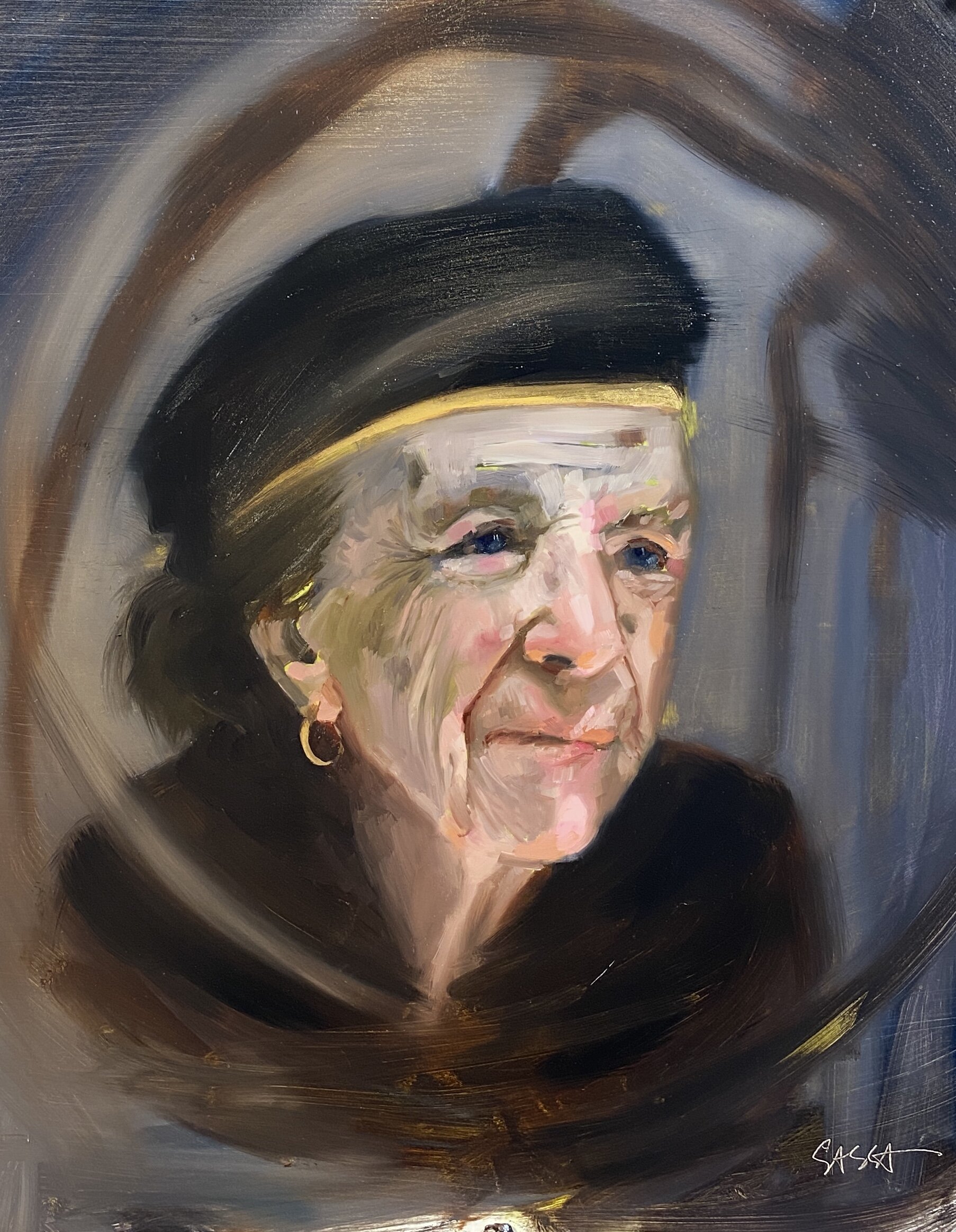Louise bourgeois
1911-2010
“Art is a guarantee of sanity”
“I transform hate into love”
Louise Bourgeois was seventy-one when the Museum of Modern Art hosted her retrospective in 1982. It was the museum’s first exhibition of this kind given in honor of a female artist. Around that time, less than 15% of the works exhibited by MOMA were made by women, a statistic that reflects the underrepresentation of female artists all over the world at the time.
If Louise Bourgeois had been a man, you would know her name, and you would recognize her art. Her career spanned eight decades, and she literally worked until she died at the age of ninety-eight. She made thousands of works, everything from delicate fiber pieces to watercolor prints to monumental sculptures. Her giant steel spiders are among my favorite works of hers (I put one in the background of her painting!).
Louise is one of my favorite artists of all time. Though I do love the pure aesthetic of her work, what I most love is her approach. I firmly believe she would have died decades earlier if she hadn't made art. You HAVE to listen to her talk about her work. I linked some of her best interviews below. The first time I heard her speak, I was captivated. She was brutally honest and full of absolute rage. Louise had DEMONS, friends. But rather than hiding them in the closet like most people, she exorcised them. She carved them into stone, scratched them into paper, cast them in plaster, and often threw them on the floor in a fit of anger, breaking them into a million pieces. She didn’t dress them up to make them suitable for the public. At times her demons became hideous invented bodily organs, giant terrifying creatures, and bloody drawings. She shied away from nothing in her art making. Sexuality, death, fear, betrayal, and anxiety were among the themes prevalent in her work. She also didn’t shy away from materials not typically used by women artists at the time. People are often surprised to learn that the hands behind those enormous and horrifying steel spiders belonged to a tiny lil’ French woman. Bad. Ass.
Louise spoke candidly about the emotional traumas of her childhood, of which there were many. She was particularly affected by the live-in tutor that became her father’s mistress when her mother fell ill with the Spanish flu. Her mother never recovered from her illness and died when Louise was in her twenties. Though she began studying Mathematics at the Sorbonne, the grief she felt over her mother’s death led her to make art.
After attending several art ateliers, she moved from France to New York City in 1938 and studied at the Art Students League. Her works were shown alongside some seriously big names: Rothko, de Kooning, Duchamp (You know, the urinal guy?). You can find photos of her hanging out with Jackson Pollock and Andy Warhol. She earned a slew of awards in her life, including the National Medal of the Arts from President Clinton. Personally I feel these men were the lucky ones to be in her presence, show their work with her, and give her awards. These relationships don’t validate her success in my mind, but they do illustrate a point I made earlier: If Louise Bourgeois had been a man, you would know her name.
Thank you, Louise Bourgeois.
